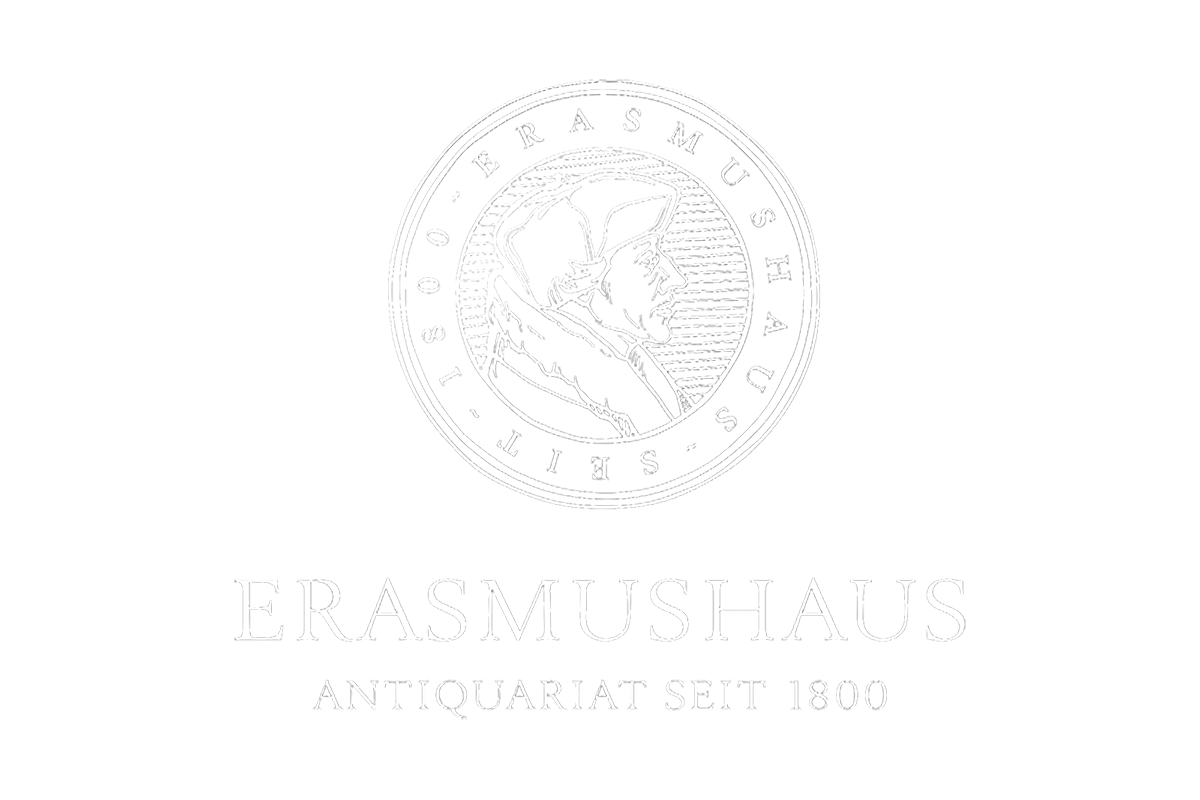AGRICOLA, Georg (1494-1555). De re metallica Libri XII.Folio (330x220 mm).[10], 538 (recte 502) pp., 37 ll. of index. With 2 woodcut plates and 273 text woodcuts by Hans Rudolf Manuel Deutsch.17th century limp vellum, name of author and title penned along the spine, red half-morocco slipcase.Slightly browned throughout, with worming in the margins of the index (some restored), tiny repairs to the outer margin of title. A good wide margined copy. Basel, Hieronymus Froben & Nicolaus Episcopius, March 1556.
First edition of the celebrated first systematic treatise on mining and metallurgy and one of the first technological books of modern times.
"Agricola – he latinized his name from Georg Bauer – studied in Leipzig, Bologna and Padua, became town physician of the mining centre of Joachimsthal in Bohemia and physician at Chemnitz in Saxony from 1534 until his death. Living in mining regions all his life made it possible for him to study mining practices at first hand, and these direct observations made his book particularly valuable and effective ...
In the late Middle Ages there were very important advances in mining and metallurgy, reflected first in the Probierbüchlein of c. 1510 (the first printed book on the subject), then in Biringuccio's fine Pirotechnia (1540) and finally in this great work of Agricola's, by far the most authoritative account of south German technology.
The De re metallica embraces everything connected with the mining industry and metallurgical processes, including administration, prospecting, the duties of officials and companies and the manufacture of glass, sulphur and alum. The magnificent series of two hundred and seventy-three large woodcut illustrations by Hans Rudolf Manuel Deutsch add to its value. Some of the most important sections are those on mechanical engineering and the use of water-power, hauling, pumps, ventilation, blowing of furnaces, transport of ores, etc., showing a very elaborate technique.
In Book V, and also in his De Ortu et Causis Sub-terraneorum (Basel, 1546) Agricola made an important contribution to physical geology. He recognized the influence of water and wind on the shaping of the land-scape and gave a clear account of the order of the strata he saw in the mines. Writing on the origin of mountains, he describes the eroding action of water as their cause with a perspicacity much in advance of his time." (PMM).
The De re metallica was frequently reprinted and translated into many other languages – the first being the German translation by Philip Bechius (1521-1560), a friend of Agricola and professor at the University of Basel – and is said to have reached China in the 17th century.
Provenance: Manuscript owner's entry of a convent of St. Mary, another ms. entry cancelled.
References: F. Hieronymus, Theophrast und Galen – Celsus und Paracelsus II (2005), n° 289; Adams A-349; PMM 79; Horblit, One Hundred Books Famous in Science, 2b; Duveen pp. 4-5; Ferguson I, p. 9; Kress I, 71; Norman Library 20.
CHF 40000


